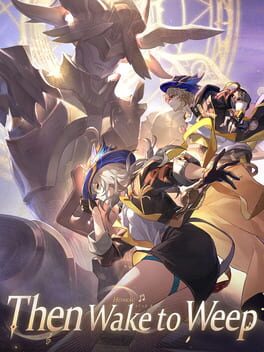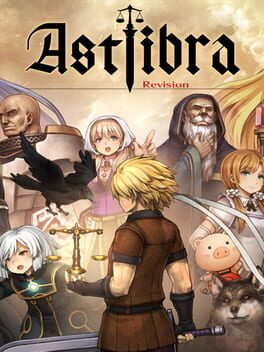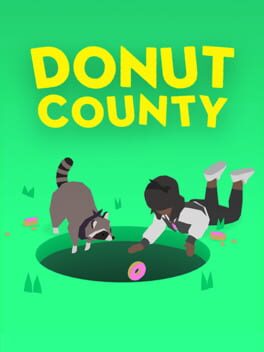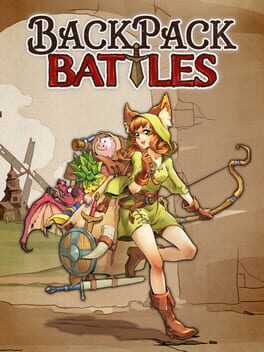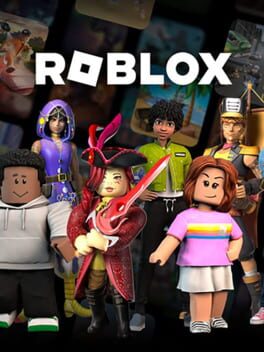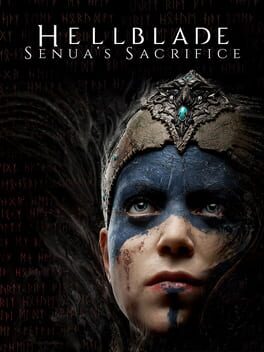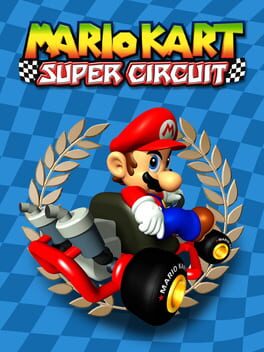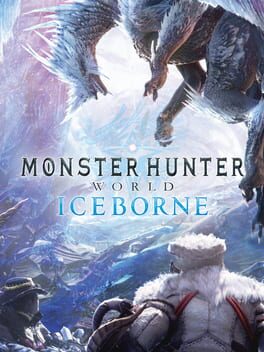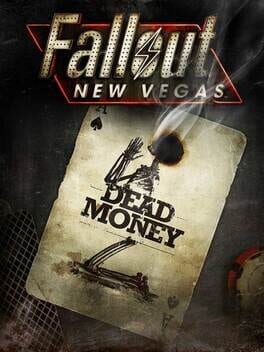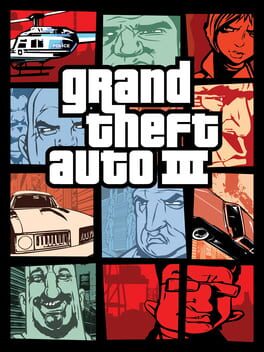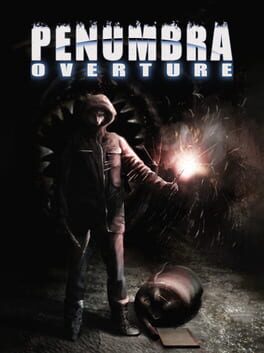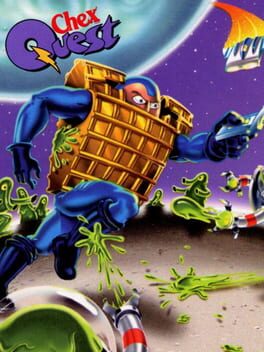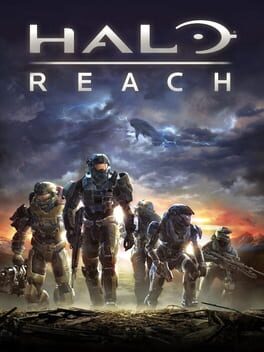NovaNiles
3375 Reviews liked by NovaNiles
This review contains spoilers
I went into this game with tempered expectations as I was cautious of how the game would hold up. Despite how much I respect its ambition and how ahead of its time it was, I found Metroid 1 to range from mildly enjoyable to moderately frustrating, so I was pretty skeptical on how a successor on the Gameboy would stack up…after playing it, I am glad to have had my concerns proved wrong. Very wrong in fact, as this is a fantastic game, a huge step up from its predecessor and the game that made me a real fan of Metroid.
The first substantial improvement over the first game is the controls. Samus is now able to shoot below herself when in midair and can take a stationary crouched position to shoot knee-high targets, making it so combat is more like fighting enemies and less like fighting the limited controls.
There are ten save stations around the map, though two are very close to each other so functionally there are nine. I think it can be a little bit too hard to come by one, but overall, it works fine, and I much prefer it over Metroid 1’s password system. There are also refueling stations placed about, they come in handy but are too few and far between to be able to lean on.
Metroid wouldn’t be Metroid without upgrades and Metroid II not only keeps the old ones but brings in some new blood with the spider-ball and the space-jump. The spider ball lets Samus cling to surfaces while in morph-ball mode and traverse walls and ceilings which adds some nice verticality to exploration. The space-jump serves as its more mobile late game equivalent, letting Samus be able to jump repeatedly while in midair, infinitely if your timing is good. I don’t think a single other powerup in Metroid’s history feels as satisfying to get as the space-jump, though the screw-attack comes second due to how well it synergizes with the space-jump.
What I believe to be the most important quality of a Metroid game is its exploration and world design…and the Metroid community’s most common complaint about Metroid II is regarding its exploration and world design…specifically, its different approach to entries in the series both preceding and succeeding it. The player has to enter and complete each zone in a specific order with backtracking being largely absent, once you are done with an area you typically never have to set foot in it again and what few revisits there are, are very brief. Though, each zone lets you explore in a non-linear manner within its confines. I think this direction is perfect for the game when accounting for the often-forgotten fact that this was made for the Gameboy, a handheld console most owners would typically use in car rides, on breaks or during recess. Having a giant intertwined world with backtracking large distances like Metroid 1 is a little bit demanding for a system people would typically play for shorter time frames. add the fact that the first Metroid was already difficult to navigate while having the advantage of being on a home console where most people would typically have longer more dedicated play-sessions than a handheld, a more bite-sized approach to the world that still embraces non-linearity works best for the Gameboy, while still keeping what makes Metroid…well, Metroid!
The second most common complaint about Metroid II is how zoomed in the camera is. I view it in a similar vein to Resident Evil’s fixed camera angles, where the game is designed specifically to obscure the players vision. Vision is one of your strongest and most reliable abilities in a game, so to have that limited makes you more vulnerable. The game takes something away from you. This would normally be annoying in something like an action game or a shooter, but with horror it adds to the experience. Metroid II, whether you find it scary or not, is a horror game. It turns what was a limitation of the hardware into a way to build dread. When you find the shed remains of a recently hatched mutant Metroid, you know its near, but not exactly where it is or when it will attack, having to keep begrudgingly inching forward, not knowing when it’s going to pop into view.
Both the story and objective of the game revolve around hunting Metroids. the Metroids, while being a plot point in Metroid 1 and the series namesake, I’d argue this is their first real game in the spotlight. When you first land on SR-388 you enter a cave and explore for a bit, then eventually find a Metroid, but unlike previous encounters with one, this one starts to mutate. It jettisons its old form for one resistant to the ice beam at the cost of a very weak underbelly. As you dive further into the planets depths finding upgrades and progressing, you find more and more Metroids, some being even further along their mutation process, getting more agile and deadly. while fighting the Metroids can be range from an intense, erratic scuffle to a complete mess depending on the arena design, I ultimately enjoy their presence throughout the game and even the worst of the fights are better than any of the bosses in Metroid 1.
I really adore the environmental story telling throughout the game, especially near the end just before the Metroid nest where there are no enemies besides the Metroids to convey how invasive they are to SR-388’s ecosystem. It really sells the sense of urgency in hunting the Metroids before they mutate to a stage too strong for you to stop and eventually take over the planet in its entirety.
Metroid II is extremely ambitious for a horror game on the Gameboy and it’s even more impressive that it manages to achieve what it does. It has an intensely strong sense of identity and stands as both a huge improvement from Metroid 1 on almost every front and as a great game in its own right.
Maybe the most underrated game of its era.
The first substantial improvement over the first game is the controls. Samus is now able to shoot below herself when in midair and can take a stationary crouched position to shoot knee-high targets, making it so combat is more like fighting enemies and less like fighting the limited controls.
There are ten save stations around the map, though two are very close to each other so functionally there are nine. I think it can be a little bit too hard to come by one, but overall, it works fine, and I much prefer it over Metroid 1’s password system. There are also refueling stations placed about, they come in handy but are too few and far between to be able to lean on.
Metroid wouldn’t be Metroid without upgrades and Metroid II not only keeps the old ones but brings in some new blood with the spider-ball and the space-jump. The spider ball lets Samus cling to surfaces while in morph-ball mode and traverse walls and ceilings which adds some nice verticality to exploration. The space-jump serves as its more mobile late game equivalent, letting Samus be able to jump repeatedly while in midair, infinitely if your timing is good. I don’t think a single other powerup in Metroid’s history feels as satisfying to get as the space-jump, though the screw-attack comes second due to how well it synergizes with the space-jump.
What I believe to be the most important quality of a Metroid game is its exploration and world design…and the Metroid community’s most common complaint about Metroid II is regarding its exploration and world design…specifically, its different approach to entries in the series both preceding and succeeding it. The player has to enter and complete each zone in a specific order with backtracking being largely absent, once you are done with an area you typically never have to set foot in it again and what few revisits there are, are very brief. Though, each zone lets you explore in a non-linear manner within its confines. I think this direction is perfect for the game when accounting for the often-forgotten fact that this was made for the Gameboy, a handheld console most owners would typically use in car rides, on breaks or during recess. Having a giant intertwined world with backtracking large distances like Metroid 1 is a little bit demanding for a system people would typically play for shorter time frames. add the fact that the first Metroid was already difficult to navigate while having the advantage of being on a home console where most people would typically have longer more dedicated play-sessions than a handheld, a more bite-sized approach to the world that still embraces non-linearity works best for the Gameboy, while still keeping what makes Metroid…well, Metroid!
The second most common complaint about Metroid II is how zoomed in the camera is. I view it in a similar vein to Resident Evil’s fixed camera angles, where the game is designed specifically to obscure the players vision. Vision is one of your strongest and most reliable abilities in a game, so to have that limited makes you more vulnerable. The game takes something away from you. This would normally be annoying in something like an action game or a shooter, but with horror it adds to the experience. Metroid II, whether you find it scary or not, is a horror game. It turns what was a limitation of the hardware into a way to build dread. When you find the shed remains of a recently hatched mutant Metroid, you know its near, but not exactly where it is or when it will attack, having to keep begrudgingly inching forward, not knowing when it’s going to pop into view.
Both the story and objective of the game revolve around hunting Metroids. the Metroids, while being a plot point in Metroid 1 and the series namesake, I’d argue this is their first real game in the spotlight. When you first land on SR-388 you enter a cave and explore for a bit, then eventually find a Metroid, but unlike previous encounters with one, this one starts to mutate. It jettisons its old form for one resistant to the ice beam at the cost of a very weak underbelly. As you dive further into the planets depths finding upgrades and progressing, you find more and more Metroids, some being even further along their mutation process, getting more agile and deadly. while fighting the Metroids can be range from an intense, erratic scuffle to a complete mess depending on the arena design, I ultimately enjoy their presence throughout the game and even the worst of the fights are better than any of the bosses in Metroid 1.
I really adore the environmental story telling throughout the game, especially near the end just before the Metroid nest where there are no enemies besides the Metroids to convey how invasive they are to SR-388’s ecosystem. It really sells the sense of urgency in hunting the Metroids before they mutate to a stage too strong for you to stop and eventually take over the planet in its entirety.
Metroid II is extremely ambitious for a horror game on the Gameboy and it’s even more impressive that it manages to achieve what it does. It has an intensely strong sense of identity and stands as both a huge improvement from Metroid 1 on almost every front and as a great game in its own right.
Maybe the most underrated game of its era.
I've been playing this game since launch, played through the Belobog and the Xianzhou arc, and didn't really put much thought into the story as at best they're just "good" and serviceable and at worst (The Xianzhou arc, in particular) a complete mess.
Penacony however, blows them out of the water completely. I actually started to really care deeply about the story and characters (and unironically got addicted to the game). I didn't plan on writing a review of this game ever, since I thought there wouldn't be anything really incredible. I was completely wrong, ever since 2.0 the writing is actually really great?? I didn't expect this after the Xianzhou arc at all. Ever since, they've announced that HI3's writer (that wrote the best arcs in all hoyoverse) would be handling this game, starting from Penacony. You could really feel the jump in writing quality from that point onward.
I really like most of the twists and especially the ending. Though I do see people complain regarding the mystery aspect of Penacony, mentioning that it is too "enshrouded in mystery". I honestly really like that aspect, as they do enforce a "show, not tell" kind of writing from and especially at the beginning, though I do agree that some payoffs of that are quite underwhelming like "Death".
Overall, the Penacony arc as a whole have been nothing short of impressive, there is still 2.3 left as an epilogue to wrap up this arc, but the story itself is honestly up there with HI3 Flamechasers arc for me in the hoyoverse. It may have been convoluted with some pacing issues somewhere along the line, but it managed to pull through and gives justice to all the characters in the end, including the MC (TB), with a very peak climax of a final act. I'm glad they actually give the TB a huge moment to shine while showing their worth and not just make them a punching bag for other characters to shine instead.
Penacony however, blows them out of the water completely. I actually started to really care deeply about the story and characters (and unironically got addicted to the game). I didn't plan on writing a review of this game ever, since I thought there wouldn't be anything really incredible. I was completely wrong, ever since 2.0 the writing is actually really great?? I didn't expect this after the Xianzhou arc at all. Ever since, they've announced that HI3's writer (that wrote the best arcs in all hoyoverse) would be handling this game, starting from Penacony. You could really feel the jump in writing quality from that point onward.
I really like most of the twists and especially the ending. Though I do see people complain regarding the mystery aspect of Penacony, mentioning that it is too "enshrouded in mystery". I honestly really like that aspect, as they do enforce a "show, not tell" kind of writing from and especially at the beginning, though I do agree that some payoffs of that are quite underwhelming like "Death".
Overall, the Penacony arc as a whole have been nothing short of impressive, there is still 2.3 left as an epilogue to wrap up this arc, but the story itself is honestly up there with HI3 Flamechasers arc for me in the hoyoverse. It may have been convoluted with some pacing issues somewhere along the line, but it managed to pull through and gives justice to all the characters in the end, including the MC (TB), with a very peak climax of a final act. I'm glad they actually give the TB a huge moment to shine while showing their worth and not just make them a punching bag for other characters to shine instead.
Astlibra Revision
2022
Apparently, it is only made by one person. Which doesn't seem that way in most of my playthrough, but I will take that into account.
I don't typically play side-scroller, but I will say that the combat is really engaging and fun. It has a complex system, which can get pretty formulaic late in the game, but I guess it's a given, considering how broken you can get later on.
The soundtrack is actually incredibly hype.
The story is where it's at. You started off playing as a hero with a bird looking for someone dear to him and you get this feeling that something is.. off. It's nothing special or unique at first glance, but this game is the epitome of going from 0 to 100. Never in a million years would I have ever guess the game's final sequence of moments or even the hours leading up to it judging from how it starts. There are a lot of plot twists that you won't expect and fortunately it's quite well done. It does get pretty "anime" at times, not in a bad way mostly, I would say it's part of the game's charm.
The characters, especially the main cast, have a soul and personality and not just there to push the MC. They all have their own goals and role to play.
My only complaint for this game is that, it does get slightly dragged near the end. There are new elements but some things are also recycled. Since, it is made just by one person, I will let that slide. Though at this point you're probably too invested for this to make you lose interest anyways.
Overall, this is hands down one of the best Indie games I've played, especially in terms of narrative. KEIZO really poured his soul into this, and I hope to see more of his work.
I don't typically play side-scroller, but I will say that the combat is really engaging and fun. It has a complex system, which can get pretty formulaic late in the game, but I guess it's a given, considering how broken you can get later on.
The soundtrack is actually incredibly hype.
The story is where it's at. You started off playing as a hero with a bird looking for someone dear to him and you get this feeling that something is.. off. It's nothing special or unique at first glance, but this game is the epitome of going from 0 to 100. Never in a million years would I have ever guess the game's final sequence of moments or even the hours leading up to it judging from how it starts. There are a lot of plot twists that you won't expect and fortunately it's quite well done. It does get pretty "anime" at times, not in a bad way mostly, I would say it's part of the game's charm.
The characters, especially the main cast, have a soul and personality and not just there to push the MC. They all have their own goals and role to play.
My only complaint for this game is that, it does get slightly dragged near the end. There are new elements but some things are also recycled. Since, it is made just by one person, I will let that slide. Though at this point you're probably too invested for this to make you lose interest anyways.
Overall, this is hands down one of the best Indie games I've played, especially in terms of narrative. KEIZO really poured his soul into this, and I hope to see more of his work.
Donut County
2018
Donut County was in a bundle with Neon White during a "Publisher Sale" on Steam and I bought it because I wanted Neon White and this game was just 1€ or so.
I don't know what I expected tbh. I thought it was about a racoon which sales donuts to some people. Well...it's that, but not entirely. I won't spoil the story, but it's a "feed that hole" type of game.
You're controlling a hole and you must eat the planet. It reminded me a tiny bit of Katamari, cause you're destroying the world with your main item. You are thrown into around 15 short levels and you must feed your hole to accomplish the level. As I said, the game has a little story to give, but I won't spoil it, because I'm no spoiler and I skipped half of the dialogues.
It's a little game which I completed in 1 hour and 20 minutes. So if you got 1h30 or 2h free and you don't know what to do with that time, play Donut County. It's not that bad, but nothing great either.
I don't know what I expected tbh. I thought it was about a racoon which sales donuts to some people. Well...it's that, but not entirely. I won't spoil the story, but it's a "feed that hole" type of game.
You're controlling a hole and you must eat the planet. It reminded me a tiny bit of Katamari, cause you're destroying the world with your main item. You are thrown into around 15 short levels and you must feed your hole to accomplish the level. As I said, the game has a little story to give, but I won't spoil it, because I'm no spoiler and I skipped half of the dialogues.
It's a little game which I completed in 1 hour and 20 minutes. So if you got 1h30 or 2h free and you don't know what to do with that time, play Donut County. It's not that bad, but nothing great either.
Backpack Battles
2024
A game that assembles 3 genres into one game but just one of them is developped to the maximum potential and the other two could do better. I bought it, because it's a Roguelike title (I love roguelikes) and it was pretty cheap.
As I said, Backpack Battles represents 3 genres. You got the roguelike aspect, where you can find and put a bunch of different items in your backpack. Some of them have synergies and others even can fuse together to a even better item or weapon to combat your next opponent. Every time you win or lose a battle, you're sent to the shop, where you can buy or sell your items to get stronger and to continue your journey.
Second genre that you can find here, is the inventory managment, which is by far my favourite and maybe the best developped part in the game. Once you're entering the shop, you can buy items and you have to put them in your backpack. But it's not some ordinary "put it in your backpack and go on", it's a tiny bit more complex than this. You actually have to manage your inventory, cause you got limited space in your backpack and every item has another shape and size to deal with while packing. But don't worry! The shop not only sells weapons and items, but alos more "packback-space" to make your backpack bigger and your management easier. You got a few different backpack additions and they can also make synergies with your items you're putting there.
The last genre, which makes probably the biggest part, is the autobattler. As I understood, you're fighting against other people and their characters. So, you're entering the shop, you buy all your stuff you need. Then you can put them in your backpack (don't forget the synergies and item fusions) and after that, you leave the shop and you're fighting against another player.
So...yeah, that was Backpack Battles. It's a game that I start when I'm heavily bored and I need something to distract myself. I often start a series while watching, cause you don't have to pay much attention to the game. Maybe reading the item effects, but nothing more. I liked the item management aspect, but the combat is boring (autobattler duh). I must admit, that I was a bit lost in the beginning due to the mass of items and different effects you get, but it's nothing you can't deal with. Take your time to read everything and you'll win your first run fast enough.
As I said, Backpack Battles represents 3 genres. You got the roguelike aspect, where you can find and put a bunch of different items in your backpack. Some of them have synergies and others even can fuse together to a even better item or weapon to combat your next opponent. Every time you win or lose a battle, you're sent to the shop, where you can buy or sell your items to get stronger and to continue your journey.
Second genre that you can find here, is the inventory managment, which is by far my favourite and maybe the best developped part in the game. Once you're entering the shop, you can buy items and you have to put them in your backpack. But it's not some ordinary "put it in your backpack and go on", it's a tiny bit more complex than this. You actually have to manage your inventory, cause you got limited space in your backpack and every item has another shape and size to deal with while packing. But don't worry! The shop not only sells weapons and items, but alos more "packback-space" to make your backpack bigger and your management easier. You got a few different backpack additions and they can also make synergies with your items you're putting there.
The last genre, which makes probably the biggest part, is the autobattler. As I understood, you're fighting against other people and their characters. So, you're entering the shop, you buy all your stuff you need. Then you can put them in your backpack (don't forget the synergies and item fusions) and after that, you leave the shop and you're fighting against another player.
So...yeah, that was Backpack Battles. It's a game that I start when I'm heavily bored and I need something to distract myself. I often start a series while watching, cause you don't have to pay much attention to the game. Maybe reading the item effects, but nothing more. I liked the item management aspect, but the combat is boring (autobattler duh). I must admit, that I was a bit lost in the beginning due to the mass of items and different effects you get, but it's nothing you can't deal with. Take your time to read everything and you'll win your first run fast enough.
Roblox
2006
I really don't understand what people see in this title. The psychosis representation is well done and the pattern identifying gameplay is interesting because it's indicative of paranoia - but that doesn't make the game any better.
I could rant about just about every section of the game, but in the interest of my own time I'm going to keep my critique brief:
- The graphics are technically nice, yet every area looks the same and the whole game is far too dark.
- I didn't care one bit for Senua, her journey or any of the other "characters" in the plot. The narrative was entirely ungripping to me.
- The puzzle design is loathsome. I know it's subjective but I never had any clue what the game wanted from me, and when I eventually fumbled my way to a solution it still made no more sense. It's all so obscure and poorly informed to you.
- The combat sucks. I have the feeling that's the point, but it didn't need to be so plentiful if it was meant to be bad. I did, however, like the final boss encounter (the music and the "let go" solution was cool).
I know this game is entirely unique (excluding the existence of the sequel) and that the developers should be praised for their creative vision, but I really didn't get on with this game at all. It is a very short game and yet I spent most of it just begging for it to end. I know it's a representation of Hel and that it isn't supposed to be fun, but I don't think that's an excuse for being just plain not very good.
I could rant about just about every section of the game, but in the interest of my own time I'm going to keep my critique brief:
- The graphics are technically nice, yet every area looks the same and the whole game is far too dark.
- I didn't care one bit for Senua, her journey or any of the other "characters" in the plot. The narrative was entirely ungripping to me.
- The puzzle design is loathsome. I know it's subjective but I never had any clue what the game wanted from me, and when I eventually fumbled my way to a solution it still made no more sense. It's all so obscure and poorly informed to you.
- The combat sucks. I have the feeling that's the point, but it didn't need to be so plentiful if it was meant to be bad. I did, however, like the final boss encounter (the music and the "let go" solution was cool).
I know this game is entirely unique (excluding the existence of the sequel) and that the developers should be praised for their creative vision, but I really didn't get on with this game at all. It is a very short game and yet I spent most of it just begging for it to end. I know it's a representation of Hel and that it isn't supposed to be fun, but I don't think that's an excuse for being just plain not very good.
ScummVM
2001
This is the second part of a two-part review for Monster Hunter: world, except this one will be for Iceborne. I strongly encourage you to read the first part here. Iceborne is an equally long game as World, but I don’t have as much to cover this time, so it should be shorter. This DLC has been hyped up for me way before I got into Monster Hunter, so I went in with moderate expectations, but considering my issues with the base game, I wasn’t expecting anything mind-blowing. Needless to say, it was a fantastic experience with a few snags, let’s get right into it.
Iceborne is a substantial DLC right away because it fundamentally changes how each weapon is played and what they can do. Longswords for example, get the Iai slash and Iai spirit slash. Iai slash becomes an essential tool since landing it will allow your meter to naturally charge overtime, giving you more room to disengage from the monster without fully compromising your ability to perform your Spirit Slash combo. Iai Spirit Slash on the other hand is a higher skilled foresight slash that rewards you with tremendous damage, large part-break damage, and is visually striking. However, the issue with this particular move is the timing is far too tight at times, and it has a lot of factors that make it unreliable and random which severely hinders any sort of benefit it could provide on paper. I’m not an expert when it comes to how this move works, however, I recommend watching this video by Peppo, a former speedrunner about Iai Spirit Slash. It was incredibly informal, and was personally the decision for me to never use this move despite the theoretical potential and advantage it provides. With that said, the simple inclusion of Iai Slash makes Longsword much more forgiving to play despite already being rather easy. Other weapons I can’t comment on as much, however a lot of them usually tie into another mechanic introduced into Iceborne, which is the Clutch Claw.
Clutch Claw is a rather divisive mechanic overall. In concept, it allows you to latch onto a monster from a relatively close distance, once you are latched onto a monster you have a few options. You can “tenderize” that part of the monster, which allows for more damage to be dealt in that specific area. Tenderizing takes two strikes to tenderize with light weapons, while heavy weapons only take one. This would be a fantastic mechanic because it’d allow the hunters a much faster means of defeating monsters while also rewarding monster knowledge by tenderizing weak points to deal even more damage. The issue with this mechanic for Iceborne specifically are the monsters themselves, or rather their bloated health pools. Monsters in Iceborne require you tenderize them to deal adequate damage for them to go down at a reasonable pace, which bogs down many fights to “clutch claw and tenderize as soon as possible”. It heavily restricts the approach one can take fighting monsters in Iceborne, that’s not to mention how inaccurate The Clutch Claw also is. Aiming the clutch claw requires you to aim a reticle at the part you wish to clutch onto, if you aim successfully, then there’s no issue, but that’s the problem, the aiming is terrible. Monsters are incredibly fast and always moving, so having the time to carefully aim and clutch onto a monster is a nightmare, on top of its short range, you really need to put yourself in danger to do it. At least if you latch onto the wrong part, you can jump to other parts of the monster, but this can waste time and has incredibly odd input buffering issues from personal experience, but this may have been my own issue entirely by quickly hitting the buttons, it was annoying all the same.
Clutch Claw’s second important use is wall banging with the slinger. In World, the slinger was mostly used for environmental interaction and getting the monster’s attention while also being able to interrupt their attacks if timed right. Wall banging is not only better in every conceivable way to these options, but once again brings up a balancing issue, except in reverse to tenderizing. If you can clutch onto a monster’s face while they’re not enraged you can use up all of your slinger ammo to make them go sprinting into a wall, which will deal tremendous part break damage and have them topple over, giving you a gigantic opening. You can also adjust where the monster is facing to ensure they run into some obstacle or wall for the topple, which is useful. Wall banging pretty much trivializes any fight before Iceborne, and in Iceborne itself, it can be equally trivializing with the right coordination, guaranteeing a topple is already strong, but wall banging itself can deal immense damage to a monster as well. While I think the challenge of the monsters you fight in Iceborne can make up the difference here, wall banging at first is an incredibly satisfying and fun mechanic, but it’s far too easy and rewarding for something that only requires some slinger ammo and the monster not being enraged. Let’s not forget to mention that tenderizing the monster will drop slinger ammo for you if you use a light weapon, the game is giving you the resources to repeat this process over and over. That’s the fundamental problem with Iceborne to me, they design these monsters around both of these concepts, to tenderize, and to wall bang,, so to make up for that, they made monsters have so much health and resistance, if you decide not to use these methods, I’d argue your chances of succeeding later become vastly lower. Not to mention it can slow down certain fights to an absolute crawl, because you need to use the clutch claw, but if the monster is moving around a lot, and you’re just getting unlucky and knocked off a lot, you’re just kind of screwed. Granted you can still fight the monster normally, but with their health, and that lovely time limit adding pressure to be a bit faster, it’s a combination I did not enjoy very much initially, but you do get used to the new flow Iceborne presents, though I feel it dumbs down gameplay a lot and can be a crutch.
I think I’ve addressed some negatives, let’s get into some positives! The monster roster for Iceborne is nothing short of utterly amazing! While I definitely had my favorites from World like Nergigante, Teostra, and Odagaron to name a few, Iceborne quickly introduced me to some of my all-time favorite monsters ever in both design and fights. Nargacuga’s blinding speed yet incredibly fair openings, Brachydios being a knuckle duster with explosive AoE’s, and Barioth’s blinding speed and aggression that can be stopped cold by shattering his wings. There were very few fights in Iceborne I didn’t enjoy or at least tolerated compared to base World, it gave the game much needed variety outside of World’s roster which felt very dinosaur and dragon loaded. Iceborne certainly doesn’t shy away from adding more of these types of monsters, but was pleasantly surprised to see more diverse design inclusions like Banbaro. One thing I could have done without are all the new variants of old monsters. In concept, I think the idea is good, but in Iceborne, they didn’t feel substantial enough at all to warrant including in my eyes. There are exceptions of course like Coral Pukei-Pukei, and Frostfang Barioth to name a few, but others like Ebony Odagaron and Nightshade Paolumu felt more like padding than worthwhile variants worth being in the DLC. That’s a negligent issue in the grand scheme of things, but still an issue regardless, still an amazing roster of monsters I was very pleased with.
Iceborne also has us exploring a new region: The Hoarfrost Reach. Hoarfrost Reach is a beautiful landscape covered in snow, but wasn’t too large or difficult to navigate, on top of being rather flat compared to the likes of the Ancient Forest, I was immediately a fan of this new area. One thing I was not a fan of constantly having to consume hot drinks to ensure my stamina wasn’t lowered by the cold. Thematically speaking, it’s incredibly cohesive and makes sense, mechanically? It’s bothersome to keep up with, but considering it’s not that often you need to refresh your immunity, it’s ignorable, but something I noticed compared to Elder’s Recess where you only needed to consume Cold Drinks for specific sections, not the entire map. We also get an entire new hub for this DLC, Seliana, wow. Seliana in stark comparison to Astera, was remarkably designed, much flatter, much easier to traverse, and had an unbelievably cozy and immersive feel. I loved everything Seliana had to offer in both layout and new activities such as the generator which just made certain items an absolute breeze to get without farming expeditions anymore. Seliana also had a much better and inviting Gathering Hub, with hot springs, more convenient layout, and again just really cozy. It has much better music, you get your own room you can customize and do side quests to obtain more decoration options which is an awesome inclusion that’ll give the game far more playtime and longevity for people who enjoy that. I personally only dabbled with it, but I was thoroughly impressed with how much you could do with it. As soon as I reached, I never went back to Astera, it’s just too bothersome and badly designed to navigate. I appreciate its verticality and scope, but Seliana is just more inviting and non-intrusive, it wins by a landslide.
Progression with Iceborne also felt far better than base world. A plethora of new monsters means more gear than ever to craft, and most of them are once again useful in their own right and look good to boot, with the added bonus of not having an armor set that can essentially carry you throughout the game like the Defender Gear. With that said, the last armor set in the game one could arguably obtain is far too versatile with how it’s designed, every single weapon or playstyle can be supported by it, and it’s due to this armor set that Iceborne’s endgame grinding is always the same, which is a huge detriment. Had the game allowed for any and all armor combinations to, in theory, be viable, it would have made building and using them long-term far more satisfying and valuable, but instead, what awaits you is a far superior armor set everyone uses, with zero reason not to, no negatives, no drawbacks, nothing, the only caveat being how you obtain it, but we’ll get there. Besides that one issue, the plethora of new options is great, and I very much enjoyed the progression in Iceborne more than the base world. I personally built far more weapons and armor in this expansion than my entire time in Base World because the monsters and difficulty increase every mission warranted it enough to feel important to do.
Iceborne unfortunately retreads the same issues the base world does with cutscenes, missions, and characters. None of it mattered to me, it’s all simply, once again, a means to justify why you’re fighting specific monsters, it works, but is completely unimportant overall. I once again found myself wanting to skip these cutscenes in favor of fighting large monsters. Characters are as one-dimensional as ever, but we do get a break from the Handler in this expansion for a little while, which was nice, but nothing significant. It’s honestly a tragedy these negatives still exist, as you also need to watch the cutscene first before others can join your hunt, which was equally annoying in base World, this same issue persists here. For as much as Iceborne improved upon base world, this was not one of those areas, and it’s a shame too because this DLC truly felt like it was really trying to right every wrong, but I guess it can’t all be perfect.
Let’s get into my largest criticism for Iceborne, the endgame, or more specifically, the endgame monsters you will be fighting. Now, it’d be hard for me to talk about this since it’s riddled with spoilers. I was inspired by one of my friends and inspirations, @DetectiveFail to use pastebin to discuss spoilers. So for the last section of this review, I highly suggest reading it here if you want my thoughts on it. For those who don’t, or wish not to, I will still give a brief summary here. Essentially, a lot of the final Monsters you fight in World boil down to DPS checks that don’t necessarily cater to skill, but more so how good your build is, and forces you to grind for something good enough to overcome the challenge. Monster Hunter already made it difficult at times to win due to the time limit implemented in hunts, and here that problem is exacerbated further. If your damage isn’t good enough, then you will simply wipe, that’s all there is to it. Not to mention the difficulty spike in the last two monsters especially is far too high, and I personally struggled to defeat them for several hours, to days. It was certainly rewarding and a huge accomplishment, but also an obstacle that will ensure I will never aim to complete this DLC ever again because the entire grind was rather unpleasant and not very fun. Instead it was incredibly frustrating and felt like the odds were always against me to win, this is ironically in the same spirit as Monster Hunter aims for, to feel an insurmountable challenge against giant monsters you can and will overcome. But here it feels legitimately impossible, and many have told me from talking about the final boss in Iceborne that they never came close to beating it.
This has been a very long review in the making, I appreciate everyone’s patience and support as I got this finished. I’m happy to say it is now finished, and ready to review some other great games I’ve been playing while working on this. Overall, I did love Iceborne, it was nothing but an improvement from the base game with tons of implementations, monsters, and ideas I felt were mostly good, others I can’t necessarily say I’d be sad if they never returned. While I do take many issues with the game and its expansion, I got to say it’s still a remarkable game. I’ve always wanted to get into this series, and I’m glad I did with this one! I can easily recommend it to others for the immersive monster behavior and designs, the soundtrack, and the fun combat that hits a few snags along the way. Thank you all for reading my review of Iceborne! Next time, we’ll be mixing drinks and changing lives! Until next time.
Iceborne is a substantial DLC right away because it fundamentally changes how each weapon is played and what they can do. Longswords for example, get the Iai slash and Iai spirit slash. Iai slash becomes an essential tool since landing it will allow your meter to naturally charge overtime, giving you more room to disengage from the monster without fully compromising your ability to perform your Spirit Slash combo. Iai Spirit Slash on the other hand is a higher skilled foresight slash that rewards you with tremendous damage, large part-break damage, and is visually striking. However, the issue with this particular move is the timing is far too tight at times, and it has a lot of factors that make it unreliable and random which severely hinders any sort of benefit it could provide on paper. I’m not an expert when it comes to how this move works, however, I recommend watching this video by Peppo, a former speedrunner about Iai Spirit Slash. It was incredibly informal, and was personally the decision for me to never use this move despite the theoretical potential and advantage it provides. With that said, the simple inclusion of Iai Slash makes Longsword much more forgiving to play despite already being rather easy. Other weapons I can’t comment on as much, however a lot of them usually tie into another mechanic introduced into Iceborne, which is the Clutch Claw.
Clutch Claw is a rather divisive mechanic overall. In concept, it allows you to latch onto a monster from a relatively close distance, once you are latched onto a monster you have a few options. You can “tenderize” that part of the monster, which allows for more damage to be dealt in that specific area. Tenderizing takes two strikes to tenderize with light weapons, while heavy weapons only take one. This would be a fantastic mechanic because it’d allow the hunters a much faster means of defeating monsters while also rewarding monster knowledge by tenderizing weak points to deal even more damage. The issue with this mechanic for Iceborne specifically are the monsters themselves, or rather their bloated health pools. Monsters in Iceborne require you tenderize them to deal adequate damage for them to go down at a reasonable pace, which bogs down many fights to “clutch claw and tenderize as soon as possible”. It heavily restricts the approach one can take fighting monsters in Iceborne, that’s not to mention how inaccurate The Clutch Claw also is. Aiming the clutch claw requires you to aim a reticle at the part you wish to clutch onto, if you aim successfully, then there’s no issue, but that’s the problem, the aiming is terrible. Monsters are incredibly fast and always moving, so having the time to carefully aim and clutch onto a monster is a nightmare, on top of its short range, you really need to put yourself in danger to do it. At least if you latch onto the wrong part, you can jump to other parts of the monster, but this can waste time and has incredibly odd input buffering issues from personal experience, but this may have been my own issue entirely by quickly hitting the buttons, it was annoying all the same.
Clutch Claw’s second important use is wall banging with the slinger. In World, the slinger was mostly used for environmental interaction and getting the monster’s attention while also being able to interrupt their attacks if timed right. Wall banging is not only better in every conceivable way to these options, but once again brings up a balancing issue, except in reverse to tenderizing. If you can clutch onto a monster’s face while they’re not enraged you can use up all of your slinger ammo to make them go sprinting into a wall, which will deal tremendous part break damage and have them topple over, giving you a gigantic opening. You can also adjust where the monster is facing to ensure they run into some obstacle or wall for the topple, which is useful. Wall banging pretty much trivializes any fight before Iceborne, and in Iceborne itself, it can be equally trivializing with the right coordination, guaranteeing a topple is already strong, but wall banging itself can deal immense damage to a monster as well. While I think the challenge of the monsters you fight in Iceborne can make up the difference here, wall banging at first is an incredibly satisfying and fun mechanic, but it’s far too easy and rewarding for something that only requires some slinger ammo and the monster not being enraged. Let’s not forget to mention that tenderizing the monster will drop slinger ammo for you if you use a light weapon, the game is giving you the resources to repeat this process over and over. That’s the fundamental problem with Iceborne to me, they design these monsters around both of these concepts, to tenderize, and to wall bang,, so to make up for that, they made monsters have so much health and resistance, if you decide not to use these methods, I’d argue your chances of succeeding later become vastly lower. Not to mention it can slow down certain fights to an absolute crawl, because you need to use the clutch claw, but if the monster is moving around a lot, and you’re just getting unlucky and knocked off a lot, you’re just kind of screwed. Granted you can still fight the monster normally, but with their health, and that lovely time limit adding pressure to be a bit faster, it’s a combination I did not enjoy very much initially, but you do get used to the new flow Iceborne presents, though I feel it dumbs down gameplay a lot and can be a crutch.
I think I’ve addressed some negatives, let’s get into some positives! The monster roster for Iceborne is nothing short of utterly amazing! While I definitely had my favorites from World like Nergigante, Teostra, and Odagaron to name a few, Iceborne quickly introduced me to some of my all-time favorite monsters ever in both design and fights. Nargacuga’s blinding speed yet incredibly fair openings, Brachydios being a knuckle duster with explosive AoE’s, and Barioth’s blinding speed and aggression that can be stopped cold by shattering his wings. There were very few fights in Iceborne I didn’t enjoy or at least tolerated compared to base World, it gave the game much needed variety outside of World’s roster which felt very dinosaur and dragon loaded. Iceborne certainly doesn’t shy away from adding more of these types of monsters, but was pleasantly surprised to see more diverse design inclusions like Banbaro. One thing I could have done without are all the new variants of old monsters. In concept, I think the idea is good, but in Iceborne, they didn’t feel substantial enough at all to warrant including in my eyes. There are exceptions of course like Coral Pukei-Pukei, and Frostfang Barioth to name a few, but others like Ebony Odagaron and Nightshade Paolumu felt more like padding than worthwhile variants worth being in the DLC. That’s a negligent issue in the grand scheme of things, but still an issue regardless, still an amazing roster of monsters I was very pleased with.
Iceborne also has us exploring a new region: The Hoarfrost Reach. Hoarfrost Reach is a beautiful landscape covered in snow, but wasn’t too large or difficult to navigate, on top of being rather flat compared to the likes of the Ancient Forest, I was immediately a fan of this new area. One thing I was not a fan of constantly having to consume hot drinks to ensure my stamina wasn’t lowered by the cold. Thematically speaking, it’s incredibly cohesive and makes sense, mechanically? It’s bothersome to keep up with, but considering it’s not that often you need to refresh your immunity, it’s ignorable, but something I noticed compared to Elder’s Recess where you only needed to consume Cold Drinks for specific sections, not the entire map. We also get an entire new hub for this DLC, Seliana, wow. Seliana in stark comparison to Astera, was remarkably designed, much flatter, much easier to traverse, and had an unbelievably cozy and immersive feel. I loved everything Seliana had to offer in both layout and new activities such as the generator which just made certain items an absolute breeze to get without farming expeditions anymore. Seliana also had a much better and inviting Gathering Hub, with hot springs, more convenient layout, and again just really cozy. It has much better music, you get your own room you can customize and do side quests to obtain more decoration options which is an awesome inclusion that’ll give the game far more playtime and longevity for people who enjoy that. I personally only dabbled with it, but I was thoroughly impressed with how much you could do with it. As soon as I reached, I never went back to Astera, it’s just too bothersome and badly designed to navigate. I appreciate its verticality and scope, but Seliana is just more inviting and non-intrusive, it wins by a landslide.
Progression with Iceborne also felt far better than base world. A plethora of new monsters means more gear than ever to craft, and most of them are once again useful in their own right and look good to boot, with the added bonus of not having an armor set that can essentially carry you throughout the game like the Defender Gear. With that said, the last armor set in the game one could arguably obtain is far too versatile with how it’s designed, every single weapon or playstyle can be supported by it, and it’s due to this armor set that Iceborne’s endgame grinding is always the same, which is a huge detriment. Had the game allowed for any and all armor combinations to, in theory, be viable, it would have made building and using them long-term far more satisfying and valuable, but instead, what awaits you is a far superior armor set everyone uses, with zero reason not to, no negatives, no drawbacks, nothing, the only caveat being how you obtain it, but we’ll get there. Besides that one issue, the plethora of new options is great, and I very much enjoyed the progression in Iceborne more than the base world. I personally built far more weapons and armor in this expansion than my entire time in Base World because the monsters and difficulty increase every mission warranted it enough to feel important to do.
Iceborne unfortunately retreads the same issues the base world does with cutscenes, missions, and characters. None of it mattered to me, it’s all simply, once again, a means to justify why you’re fighting specific monsters, it works, but is completely unimportant overall. I once again found myself wanting to skip these cutscenes in favor of fighting large monsters. Characters are as one-dimensional as ever, but we do get a break from the Handler in this expansion for a little while, which was nice, but nothing significant. It’s honestly a tragedy these negatives still exist, as you also need to watch the cutscene first before others can join your hunt, which was equally annoying in base World, this same issue persists here. For as much as Iceborne improved upon base world, this was not one of those areas, and it’s a shame too because this DLC truly felt like it was really trying to right every wrong, but I guess it can’t all be perfect.
Let’s get into my largest criticism for Iceborne, the endgame, or more specifically, the endgame monsters you will be fighting. Now, it’d be hard for me to talk about this since it’s riddled with spoilers. I was inspired by one of my friends and inspirations, @DetectiveFail to use pastebin to discuss spoilers. So for the last section of this review, I highly suggest reading it here if you want my thoughts on it. For those who don’t, or wish not to, I will still give a brief summary here. Essentially, a lot of the final Monsters you fight in World boil down to DPS checks that don’t necessarily cater to skill, but more so how good your build is, and forces you to grind for something good enough to overcome the challenge. Monster Hunter already made it difficult at times to win due to the time limit implemented in hunts, and here that problem is exacerbated further. If your damage isn’t good enough, then you will simply wipe, that’s all there is to it. Not to mention the difficulty spike in the last two monsters especially is far too high, and I personally struggled to defeat them for several hours, to days. It was certainly rewarding and a huge accomplishment, but also an obstacle that will ensure I will never aim to complete this DLC ever again because the entire grind was rather unpleasant and not very fun. Instead it was incredibly frustrating and felt like the odds were always against me to win, this is ironically in the same spirit as Monster Hunter aims for, to feel an insurmountable challenge against giant monsters you can and will overcome. But here it feels legitimately impossible, and many have told me from talking about the final boss in Iceborne that they never came close to beating it.
This has been a very long review in the making, I appreciate everyone’s patience and support as I got this finished. I’m happy to say it is now finished, and ready to review some other great games I’ve been playing while working on this. Overall, I did love Iceborne, it was nothing but an improvement from the base game with tons of implementations, monsters, and ideas I felt were mostly good, others I can’t necessarily say I’d be sad if they never returned. While I do take many issues with the game and its expansion, I got to say it’s still a remarkable game. I’ve always wanted to get into this series, and I’m glad I did with this one! I can easily recommend it to others for the immersive monster behavior and designs, the soundtrack, and the fun combat that hits a few snags along the way. Thank you all for reading my review of Iceborne! Next time, we’ll be mixing drinks and changing lives! Until next time.
WOW! I vaguely remember playing this when I was a good bit younger, but I hardly remembered it at all. I'm glad I got the urge to play through New Vegas again thanks to the TV series like so many others I'm sure! The whole unique aspect of it all completely giving you almost a survival horror-esque feel with the bomb collars and the ghost enemies and their unique animations as well as a very interesting linear type of storytelling with its great characters which reminded me of the first Bioshock a bit(another one I need to replay soon). As I have gotten older and experiencing this expansion again I definitely see it in a new light. Especially playing way more in 1st person then I used to since I have gotten more into the fps genre. Really itching to play the others and see how well they hold up to me now! It is always so interesting how you see things in a different light once you age and become a bit more mature lol.
Grand Theft Auto III
2001
It's so crazy to me how this was the first 3d gta game and Rockstar nailed it so perfectly. Liberty city is just as fun to traverse as it as in gta 4 and when mixed with memorable characters this game makes for a great time. I don't have an strong opinions on the story in gta 3, I think for their first try it's pretty good. My main criticism is that Claude doesn't talk, which for me at least makes me feel less involved in the story similar to gta online. I also feel like the story just kind of ends rather abruptly, like one minute your doing missions normally and then all of a sudden the credits are rolling. On the topic of missions, some of them in this game as just SOOOOO hard for no reason at all, I'm looking at you "grand theft auto" and "grand theft aero". The gameplay in gta 3 is also not the best, gunplay can be tricky at times and it feels like you die after 3 shots which makes the game extra hard during missions with big shootouts. Overall, gta 3 has a lot of good and a lot of bad which when put together make for a fairly solid start to the 3d gta games.
Penumbra: Overture
2007
I appreciate the kind of practical, real-world logic approach to the puzzles in this. If done well, that sort of thing can be engaging and rewarding, rather than dull. For the most part, that's true here, although there are some clunkers.
Genuinely tense right up until you understand how lame and easily killed the enemies are and then the whole illusion is broken - a problem that tons of games like this share but is particularly pronounced with this one.
This subgenre is a real mixed bag, and this early entry has both the good and bad of it in roughly equal measure. But there is the spark of something kind of cool here. There are worse Lovecraft takes.
Genuinely tense right up until you understand how lame and easily killed the enemies are and then the whole illusion is broken - a problem that tons of games like this share but is particularly pronounced with this one.
This subgenre is a real mixed bag, and this early entry has both the good and bad of it in roughly equal measure. But there is the spark of something kind of cool here. There are worse Lovecraft takes.
Chex Quest
1996
THIS REVIEW IS PART OF A BALANCED BREAKFAST
(Read this review right after waking up for the full experience)
Well this is a charming lil game. A somewhat amateur Doom episode with the blood and guns switched for more kid friendly alternatives. All for the price of a box of cereal (box of cereal included)!
Each level takes place in a different part of the Chex Nutrition Research Base (which is on another planet for some reason). After the base is attacked by the Flemoids (not Phlegmoids?) for some reason.
So what about the gameplay? Did you not hear me earlier? It's Doom. Literally just a mod for the original Doom. Although I did find some trouble with the weapons, as instead of distinct guns, you have many gizmos and goobers that shoot red stuff. It gets a bit confusing.
All and all, a pretty charming hour or so. I imagine if you were a kid, who got this out of the cereal your mom made you get instead of Cinnamon Toast Crunch, it would kicked ass!
(Read this review right after waking up for the full experience)
Well this is a charming lil game. A somewhat amateur Doom episode with the blood and guns switched for more kid friendly alternatives. All for the price of a box of cereal (box of cereal included)!
Each level takes place in a different part of the Chex Nutrition Research Base (which is on another planet for some reason). After the base is attacked by the Flemoids (not Phlegmoids?) for some reason.
So what about the gameplay? Did you not hear me earlier? It's Doom. Literally just a mod for the original Doom. Although I did find some trouble with the weapons, as instead of distinct guns, you have many gizmos and goobers that shoot red stuff. It gets a bit confusing.
All and all, a pretty charming hour or so. I imagine if you were a kid, who got this out of the cereal your mom made you get instead of Cinnamon Toast Crunch, it would kicked ass!
Halo: Reach
2010
Halo Reach acts as a prequel to the first Halo game, giving fans a look at the events that lead to the fall of Reach, and their link to the events of the first game.
This also marks the final time Bungie would work an Halo game.
It's kinda sad to see them go, but the seeds were already planted since Halo 2, and both Microsoft and Bungie had very different ideologies, so I'm surprised they stuck around for this long.
I'll start off by saying that even though the premise is very interesting... I think the story was pretty weak. It was hard for me to care about many of the main cast, since I don't think their characteristics got explored too much. I think Jorge was the character I enjoyed the most, but only by a small bit compared to the others.
Like I said previously, it does connect to Halo 1, and seeing that connection was really cool, but it was cool because it connected to another game, and not because it stood on its own merits, if you catch my drift.
However, the gameplay of Halo Reach is really good! It plays pretty similarly to before, but now you access to one extra ability. It can either be a drop shield, active camouflage or a jet-pack! But by default, the one you'll always get at the start of each mission is... sprinting! They finally gave the Halo series a run button, and it feels good!
It's very comparable to the Stamina meters of recent Zelda games, but without the drawback of you becoming tired after you waste your run meter, which I appreciate.
The missions themselves were also pretty good! I really liked seeing the diverse environments of Planet Reach, many of them being locations we hadn't seen before in the series, like bars inside of buildings, for example.
Although some of the missions got a bit long, but they were still fun.
The graphics haven't that big of an update since last time, but the backgrounds really pop in this one, and facial animations are really good!
The soundtrack... I'll be honest, I only caught a bit of it. It was generally well composed, with it also being the last time Martin O'Donnell and Michael Salvatori composed for a Halo game, but I couldn't remember much of it. That is with the exception of a theme that gets referenced towards the end of the game.
Overall, Halo Reach feels like it ends Bungie's run with the series on a high note. Its gameplay is probably the most fun in the series so far, but its story felt a bit lacking. While it didn't end on a note as high as Halo 3, at least it was high enough to make it satisfactory in my eyes.
This also marks the final time Bungie would work an Halo game.
It's kinda sad to see them go, but the seeds were already planted since Halo 2, and both Microsoft and Bungie had very different ideologies, so I'm surprised they stuck around for this long.
I'll start off by saying that even though the premise is very interesting... I think the story was pretty weak. It was hard for me to care about many of the main cast, since I don't think their characteristics got explored too much. I think Jorge was the character I enjoyed the most, but only by a small bit compared to the others.
Like I said previously, it does connect to Halo 1, and seeing that connection was really cool, but it was cool because it connected to another game, and not because it stood on its own merits, if you catch my drift.
However, the gameplay of Halo Reach is really good! It plays pretty similarly to before, but now you access to one extra ability. It can either be a drop shield, active camouflage or a jet-pack! But by default, the one you'll always get at the start of each mission is... sprinting! They finally gave the Halo series a run button, and it feels good!
It's very comparable to the Stamina meters of recent Zelda games, but without the drawback of you becoming tired after you waste your run meter, which I appreciate.
The missions themselves were also pretty good! I really liked seeing the diverse environments of Planet Reach, many of them being locations we hadn't seen before in the series, like bars inside of buildings, for example.
Although some of the missions got a bit long, but they were still fun.
The graphics haven't that big of an update since last time, but the backgrounds really pop in this one, and facial animations are really good!
The soundtrack... I'll be honest, I only caught a bit of it. It was generally well composed, with it also being the last time Martin O'Donnell and Michael Salvatori composed for a Halo game, but I couldn't remember much of it. That is with the exception of a theme that gets referenced towards the end of the game.
Overall, Halo Reach feels like it ends Bungie's run with the series on a high note. Its gameplay is probably the most fun in the series so far, but its story felt a bit lacking. While it didn't end on a note as high as Halo 3, at least it was high enough to make it satisfactory in my eyes.

